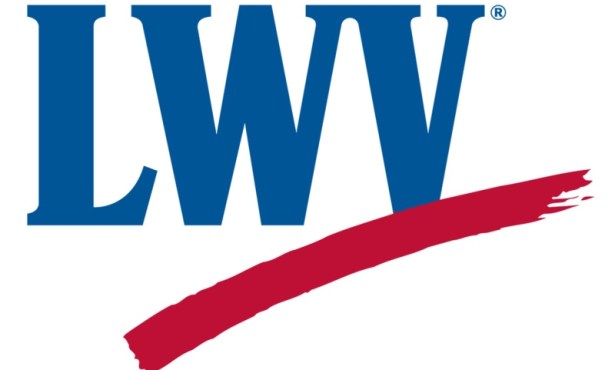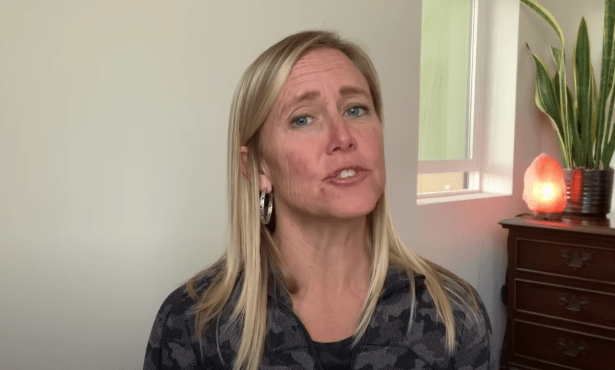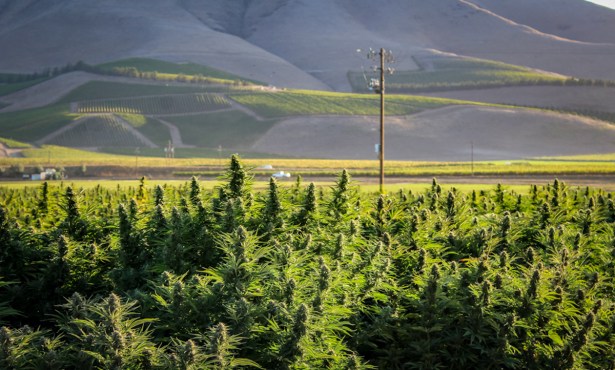Hilda: Inside SBUSD’s Struggle to Outsmart “Learning Loss” –and a Look Ahead to Fall Semester

Two weeks before she started work last summer, then newly-appointed Santa Barbara Unified School District Superintendent Hilda Maldonado struck a buoyant tone, arguing that, for schools, the pandemic represented a great chance for positive change.
“It’s a perfect storm for us to be innovative and think about education as a way to prepare our country to continue to lead the world,” she told Newsmakers at the time. “I do see it as an opportunity.”
No wonder colleagues from her teaching days dubbed her “Pollyanna.”
In the 10 months that followed, the pandemic, with its unpredictable spikes and surges — matched by an uncertain and constantly shifting set of Sacramento diktats and injunctions, accompanied by a steady stream of convoluted public health pronouncements — functioned more like a cyclonic whipsaw of conflicting challenges than a deluge of golden opportunities.
Thus Maldonado has spent the first year of her tenure as SBUSD’s new leader far more often in a reactive posture than in a stance of proactive aspiration and enterprise.
“I guess I did sound very optimistic didn’t I?” she smiled last week, during a return appearance on Newsmakers. “The first year that I taught, I was given the Pollyanna Award by the other teachers at the end of the school year. And I think I still probably live up to that name.”
“It has been a difficult road, I won’t lie,” the superintendent acknowledged. “There’s been a lot of pressure on all of us as leaders…with the decisions that we make, and why we make them, and trying to explain as, at the same time, we make sense of the ever-changing colors by the state. What is yellow? Is it blue or green? Which one was good? Which one was bad? What does that look like?
“I’m very proud of the decisions we made — I don’t think I have any regrets,” she added, however. “I think it was (correct) in November to allow ourselves the extra time we needed to identify the facilities and staffing preparation that were needed, because we were all new to this — including having the top leader be new…
“I’m still very optimistic,” she said. “I’m very proud of the work that we have done. I’m very proud of all our employees, our parents. I think our parents are continuing to trust and have patience with us. And of course, today I can say that because we’re coming down off this huge infection rate…I’m very happy that that we’ve gotten here, but it has had its’ painful moments.”
In the Newsmakers’ interview, Maldonado’s most in-depth and detailed public comments to date about how the district has navigated the pandemic, the superintendent:
- Recounted the enormously complicated — and hugely expensive (Washington in the house!) — classroom-by-classroom methods the district employed to prepare for the return of students and teachers — beginning with her recruitment of UCSB scientists, who happen to be district parents, to test air movement and develop ventilation protocols for every school.
- Described how district leaders set up from scratch a comprehensive distance learning system that reached every student — to the extent of dispatching counselors to locate kids whose families are homeless and provide them a solar-powered wireless hotspot to access classes.
- Explained how teachers and principals over the next month will assess the impact of pandemic-triggered “learning loss” on students and make efforts to differentiate it from more chronic learning problems, as she listed programs set up to address both, starting with an unprecedented four-tier summer learning initiative.
- Reported that about 75 percent of the district’s nearly 13,000 pupils have returned to classrooms, while the remainder have chosen to continue with distance learning, an option she said SBUSD hopes to keep offering, even as the district proceeds under the assumption that all schools will be allowed to reopen fully in the fall.
- Revealed some of the personal trials she has faced during the pandemic, including separation from her family, constrained by the pandemic from moving from Los Angeles, as well as her long-sought professional triumph of attaining a doctorate in education after completing her dissertation — during weekends here alone.
“Perhaps it goes back a lot to my own life’s journey: stuff, terrible stuff, happens in life,” Maldonado said, referencing her long odyssey through the education system, beginning as an 11-year immigrant from Mexico who spoke no English, when asked for a forecast of how the pandemic will impact this generation of Santa Barbara school kids in the long-term.
“And this was one that we experienced collectively, as humans across the world,” she said.
“And so what did we learn from that? We learned that we can change. We learned that we can adapt. We learned that we can be flexible in the way that we do things. We learned that even the way we conceptualize what teaching and learning is, has a different aspect beyond just, ‘what does the book say, what does the test say?'”
“So I think we learned a lot about ourselves as people,” she added. “In the United States, we have a very individual-before-the-group way of looking at things. I think in this pandemic, we looked around and said, ‘hey, we need each other.’
“Maybe we need to think of the good of the group. What is the good for our community? How do we look at that differently and think to ourselves, ‘my actions impact you, your actions impact me. Maybe I need to start caring more about how that’s happening and work together in a way that’s different.'”
Watch our conversation with Hilda Maldonado via YouTube below or by clicking through this link.https://youtu.be/HlnFe7U-8VE
Key quotes from the interview, lightly edited for clarity and length.
On whether public schools locally and in California were too slow to open.
“Were we too cautious? One of the things about being a principal and a superintendent is there’s the worry that you have every night (about) the amount of responsibility you have for the lives of each and every one of those kids.
“No, I don’t think we were too cautious…We were at the right tension of cautiousness, I believe. We had to walk a paradox of optimism and realism. When I sit back and look at the optimism to open, but the realism of what it meant then, knowing that we were coming up on holidays, Thanksgiving, Christmas, hearing about the rates starting to come up, not yet having a vaccine…
“In the midst of that, having changes to the guidance from the health and safety protocols — which we’re sitting here trying to read as fast as we can make meaning of, and then teach, cascading down to the school system, into a classroom teacher, whom we cannot access except through Zoom – had its challenges. So I feel very confident about the way we did it.”
On a recent increase in Covid cases among returning students.
“Well, look, honestly, one is too many. We shouldn’t have one at all. Every case matters. Every case is important because it impacts not just that person having an infection rate, but also the in-close contacts. If it’s one person who was next to them within three feet, within six feet, for how much time?
Those families, then, it’s a ripple effect. When I think about close to 13,000 students, close to 2,100 staff members, to have 29 cases seems not as alarming as we might think it would be for a large organization.”
On where the district is on vaccinations.
“Eighty-two percent of our staff are vaccinated or partially vaccinated. We continue to push out information to them about getting their second vaccine. Many of us, including myself, were vaccinated with the Johnson & Johnson, so we’ve been done for a while.
“We are going to offer the opportunity for parents who cannot take their own kids and who allow their kids, because remember this is still under emergency approvals by the federal government to have students vaccinated. And some parents have written to us and said to us they do not want their child vaccinated.
“We are offering buses that will take kids in the partnership with Cottage Hospital to do that for parents who choose to do. We also heard (last week) that there will be soon be vaccinations available for (students) 12 (years) and over, maybe even as soon as the summer. Those are all things that are happening, but I’m very cognizant of the fact that some parents will not choose to do that.”
On vaccine hesitancy or refusal among teachers and staff.
“We did survey our staff when we were first helping to make appointments for everyone. Again, everything, it evolved. We first started with prioritizing groups of employees to get vaccines first, our most vulnerable that are closest to everyone. And when we did that first survey, we found out that 11 percent said, ‘We’re not going to take the vaccine.’ I already have that data and I know that they’re not ready to take it.
“As an employer, I don’t know that we are able yet to require a vaccine, especially if it’s still under emergency approvals. I think I can certainly appreciate and respect the fact that some people won’t want to do that yet.”
On in-person and distance learning.
“We have been able to accommodate the parents who initially requested the in-person instruction, which in our case was close to 75% of our students are back in person. We have had some movement of families say, ‘Nope, don’t like it, too close for me. I’m going back to distance learning.’ And similarly we’ve had some families going, ‘That doesn’t look too bad. Let us back in.’ And so as space is allowed, we are able to make those changes, but they’re on a case-by-case basis.”
On the challenges of refitting classrooms.
“I have been going to schools, visiting schools. I was just at Dos Pubelos yesterday — there are some classrooms that I’ve looked at. I’m like, ‘Oh, that is pretty close. No one else can come in here. This is close enough for me.’
“We’ve looked at, there are built-in bookcases in some schools. I mean, there’s just so many configurations you can imagine…There’s heating, do you remember the old radiator heater type furniture like that, that kind of impedes. There’s been times when, for example, the teacher is right up by the blackboard and we’ve had to move where they stand and have their technical equipment off to the side so that kids are almost sitting up to that wall to fit them. So just a variety of configurations, but all in all, I think the students are able to maintain the distance.
Remember the way that the virus travels…it’s all about air flow. This whole thing has been about partnerships — I mean, this has not been done on our own. We had a pair of parents from UCSB that helped us conduct ventilation checks in our classrooms. And they basically came out with their measuring air movement tools and went through classrooms with our maintenance staff and taught them how to measure the air changes with everything closed, windows, doors closed, everything open, what does the air flow look like?
We basically did almost our own research study, annotated all of these checks through all our classrooms in our schools. Fed that information to them, they ran it through their formula and were able to tell us how many air changes were happening through the classrooms.
So we’ve directed all teachers to have windows open, doors open, and fans that blow the air out of the classrooms.
“We did sampling of every school when we did this study. Then I walked every classroom with (the president of the teachers union) and we said to the teachers, ‘meet us there, tell us what you need, tell us what you’re concerned about.’ And we had a process for them to tell us. So if they felt uncomfortable we would send a team in, check the ventilation in that classroom, check the number of air changes and report back that to them.”
On kids who prefer distance learning.
“We are currently conducting a survey of our families, who would want to stay in distance learning, to see if we’re still at that 75-25 (classroom-to-distance ratio) that I mentioned earlier. We feel that we can put together a pretty robust, rigorous distance learning program. We learned that we could do this, we could deliver instruction.
It does take a special kind of student to also be in that space. We found that there were kids that actually thrive under a distance learning program. Suddenly all these social demands on them, and ways of participating, were done in such a way that they could show what they know. And then there were kids that, nope, they needed to be in person, they need that interaction. And so we’re going to be looking at that closely, it is our wish to keep that innovation happening, but we want to make sure that there’s interest from our parents to do so.”
On summer learning program.
“It’s by invitation at this time. We are going to have six elementary sites, and all our secondary sites will also be offering summer of learning. And it’s meant to really make time for us to engage with children in literacy, math and language during the morning part of it.
In the afternoons, we have partnerships that we’re developing with people across our city that will offer enrichment activities for kids, whether it’s music, going to the park, field trips and others. Right now we’re in the process of evaluating the proposals that were sent to us by several of the nonprofits in town. I like to think of the city as an amazing classroom. We have the mountains, we have the beach, we have so many historical places that we can take children to…
“We really want to just make learning fun and have kids and families think of it as, not about this (learning) loss or you’re in trouble and things like that, but more about learning is a fun thing and we want to make sure that you’re with us and that we continue in this basically much needed space where we want to make improvements, really, in literacy and math. Let’s be honest.”
On learning loss during the pandemic.
“I think as I look at some of the initial assessments that are coming in, there is a percent of loss of learning in the traditional methods of schooling. In life, in our lifetime, we learn not just in school, but in other things that happen around us. So I think that how we approach what happens next is what matters…
“We have the data to know who has continuously fallen behind. And then there’s kids who have suffered through this pandemic, who may not have been able to really succeed in a distance learning program, that are now coming in person. And we’re looking at, their reading, their writing skills and so forth… It would be wrong for me to say it’s across the board everybody had learning loss because that’s not true…
“There are standards of learning for every grade level, for every subject area. They’re called the Common Core State Standards. And that’s the standard that we’re measuring their progress against at each of the levels. So, that is how we’re going to determine where they’re at.
When we look at these assessments together as a staff, and we look at what kids need in terms of connections to people in schools, because…their relationships with kids are the key, to learning and teaching. I’ve heard it over and over again by our teachers. I can’t connect to such and such child, somebody helped me. And then I see counselors coming in and saying, ‘We’ll go to that house. We’ll find out what’s happening.'”
Support the Santa Barbara Independent through a long-term or a single contribution.



